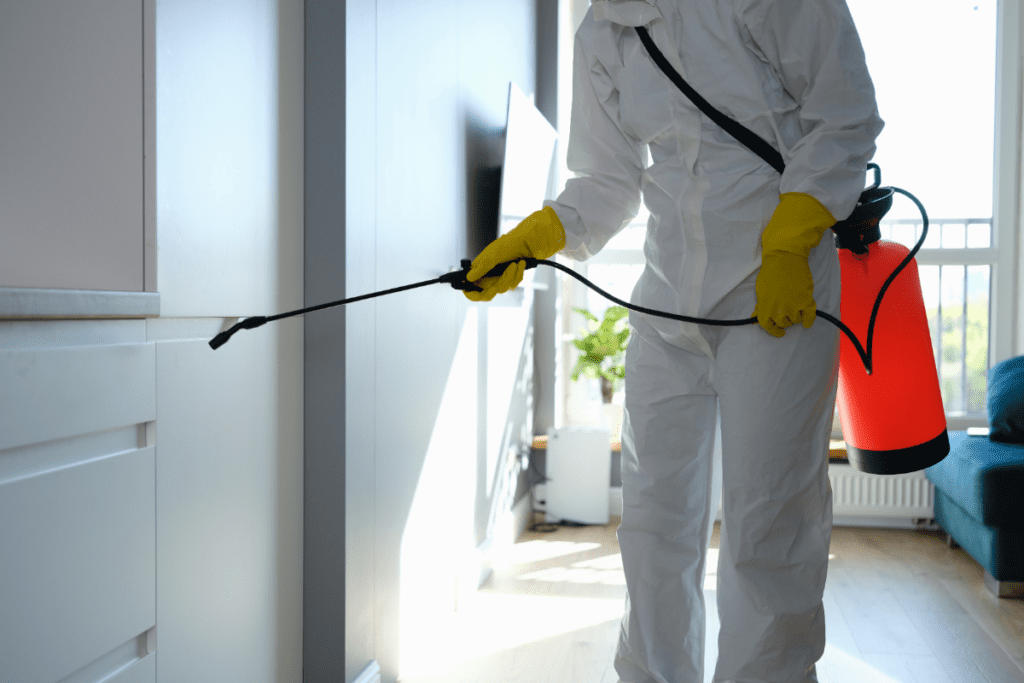On the 28th June 2023, the Regulator of Social Housing (RSH) published a report to help social landlords best tackle damp and mould. Social landlords refer to landlords who are registered with RSH, such as housing associations or local councils. Some examples of social landlords in the UK include Clarion Housing, who are also the biggest social landlord in the UK, L&Q and The Peabody Trust. The new report established by the RSH aims to help landlords like these combat damp and mould and avoid creating or inflating health problems of tenants. Particularly, the report aims to prevent anything similar to that of the tragic death of Awaab Ishak in Rochdale. This article breaks down the problem with damp and mould in social housing, what landlords are currently doing to tackle it, and what the RSH suggest.
What is the problem with damp and mould?
As mentioned, extreme damp and mould can unfortunately be fatal. Ongoing exposure to harmful damp can lead to respiratory problems, which impacts the overall health of tenants.
Although most cases of damp and mould are not as extreme, it still represents a significant problem that affects the health and well-being of residents, as well as the longevity and sustainability of the housing stock. There are many different causes of damp, but most often this issue is often a result of inadequate maintenance, poor design, and insufficient ventilation, which can lead to the accumulation of moisture and the subsequent growth of mould. There are many different types of damp, as well as different implications that damp can have on both inhabitants and the property itself.
Health Implications
Mould spores can cause a range of health issues, especially in individuals with pre-existing respiratory conditions, the elderly, and children. These health issues can include allergic reactions, asthma attacks, and other respiratory problems. In severe cases, exposure to certain types of mould can lead to serious conditions like pneumonia.
Structural Damage
Dampness can cause significant damage to the structure of a building over time. It can lead to the decay of wooden elements, damage to electrical installations, and the deterioration of plaster and paint. This not only reduces the lifespan of the housing but also increases maintenance and repair costs.
Living Conditions
Damp and mould can make living conditions uncomfortable and unpleasant. They can cause unpleasant odours, damage to personal belongings, and can make homes feel cold and unwelcoming. This can have a negative impact on mental health, contributing to stress and anxiety.
Energy Efficiency
Damp homes often require more energy to heat, as damp air is harder to warm than dry air. This can lead to increased energy costs for residents, contributing to fuel poverty.
Inequality
The problem of damp and mould is often more prevalent in social housing, affecting those in lower-income brackets more frequently. This contributes to health and social inequalities, as these individuals may not have the resources to mitigate these issues themselves.
Addressing the issue of damp and mould in social housing requires a multi-faceted approach, including improved housing design, regular maintenance, better ventilation, and education for residents on how to prevent and deal with damp and mould. It’s a public health issue that needs urgent attention from policymakers, housing providers, and health professionals.
What are social landlords doing about damp and mould?

The RSH report aimed to find out what social landlords are doing to tackle the problem of damp and mould in housing. The responses showed that the majority of landlords are taking the issues of damp and mould seriously. They are actively identifying and addressing instances of damp and mould in their tenants’ homes and have made significant improvements in their handling of such cases over the past year.
However, a small percentage of the responses did not provide RSH with the necessary evidence. While this does not necessarily mean that these landlords have poor strategies, it does suggest that further investigation into their methods of tackling damp and mould effectively is needed. The RSH report details the findings from the initial survey reported in February 2023, but also includes follow-up interactions with landlords where more information was needed.
The findings of the RSH report
What are social landlords doing well…
Effective organisations demonstrated robust governance, with strong oversight from boards and councillors regarding housing conditions, including damp and mould. Regular updates were provided to governing bodies, and there were clear processes for tenants to raise concerns. These organisations had a specific policy for damp and mould, including response times, and the landlord took clear responsibility for the issue.
High-performing landlords managed their data effectively, maintaining accurate and current property condition information based on comprehensive surveys. They validated these surveys, sometimes using external data validation, and included all aspects of the Decent Homes Standard. They also used other data sources to inform their understanding of housing conditions, including repair requests and complaints. Once damp and mould were identified in a property, they proactively inspected similar properties.
These landlords also kept up-to-date information on their tenants, including potential vulnerabilities and language needs, often through regular tenant surveys.
In terms of operational approach, effective organisations focused on understanding the current condition of tenants’ homes. They trained all staff visiting tenants on identifying damp and mould and sometimes established specialist teams to handle these issues. They used specialist contractors when necessary and offered temporary accommodation to tenants during repair work. Some landlords conducted follow-up visits to ensure the issue had not reoccurred.
Most landlords had a clear process for tenants to report damp and mould, with an escalation process if needed. They kept tenants informed about progress and prioritised tenants’ needs, especially those with potential vulnerabilities. They provided advice to tenants through their websites and other communication channels, such as newsletters.
And what are social landlords not doing so well…
In some instances, boards or councillors demonstrated weak governance, with limited oversight of housing conditions, particularly in relation to damp and mould. These governing bodies often received inadequate information about the state of their housing stock. In certain cases, there was no specific policy for damp and mould, and the overall governance of the landlord’s response was unclear. Reports on disrepair cases were sometimes not considered in the broader context of what they indicated about housing conditions, repair performance, and the general experiences of tenants.
Some landlords had poor data management practices, with references to outdated property data or incomplete housing condition surveys. There was often little to no validation of these surveys. Some landlords demonstrated an over-reliance on duplicated data. Certain housing condition surveys did not consider all aspects of Decent Homes Standard compliance and did not assess for hazards under the Housing Health and Safety Rating System.
In terms of operational approach, some landlords responded poorly to complaints of damp and mould. This included instances where no one visited the tenant’s home or determined the cause of the issue, with tenants only receiving advice on cleaning surfaces.
What do the RSH recommend for social landlords to tackle damp and mould?

Ensuring homes are safe and in good condition is a fundamental responsibility of all social landlords. They should take into account the issues highlighted in this report for effective management of damp and mould and overall housing conditions. This ensures homes are well maintained and any concerns are addressed promptly. Tenants primarily evaluate their landlord’s performance based on the condition of their homes and the quality of repair services. Effective asset management is a crucial aspect of good customer service and influences customer satisfaction levels.
High-quality, comprehensive, and current information on housing conditions forms the basis of robust asset management. Landlords cannot enhance the quality of the homes if they are unaware of their condition and the required investment. Alongside this, landlords need to understand their tenants’ needs, such as potential vulnerabilities and any language or literacy barriers in reporting issues, to appropriately prioritise these cases.
If you’re worried about damp or mould in your property and want to seek expert, impartial advice, then it might be worth getting a home survey.




